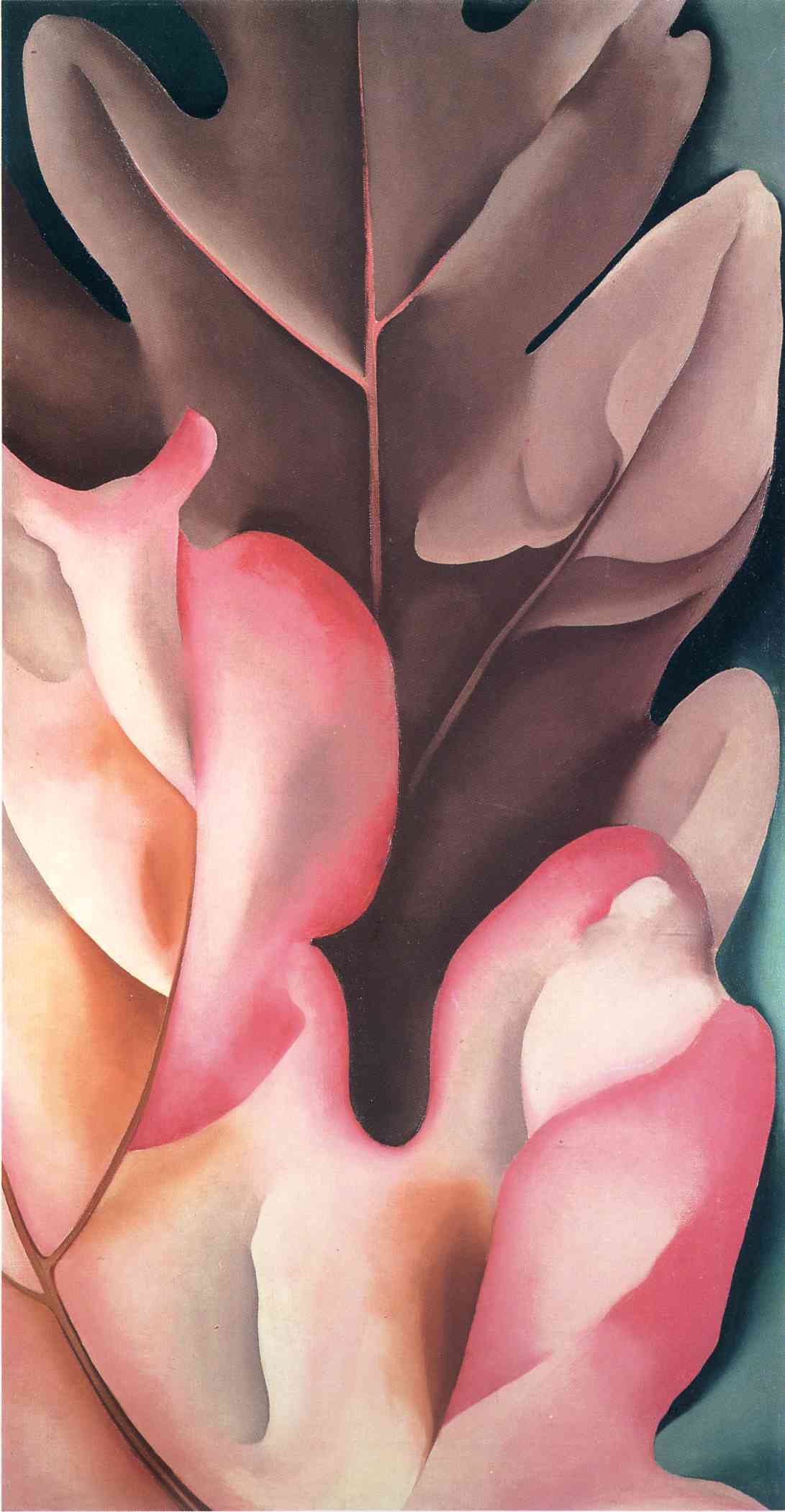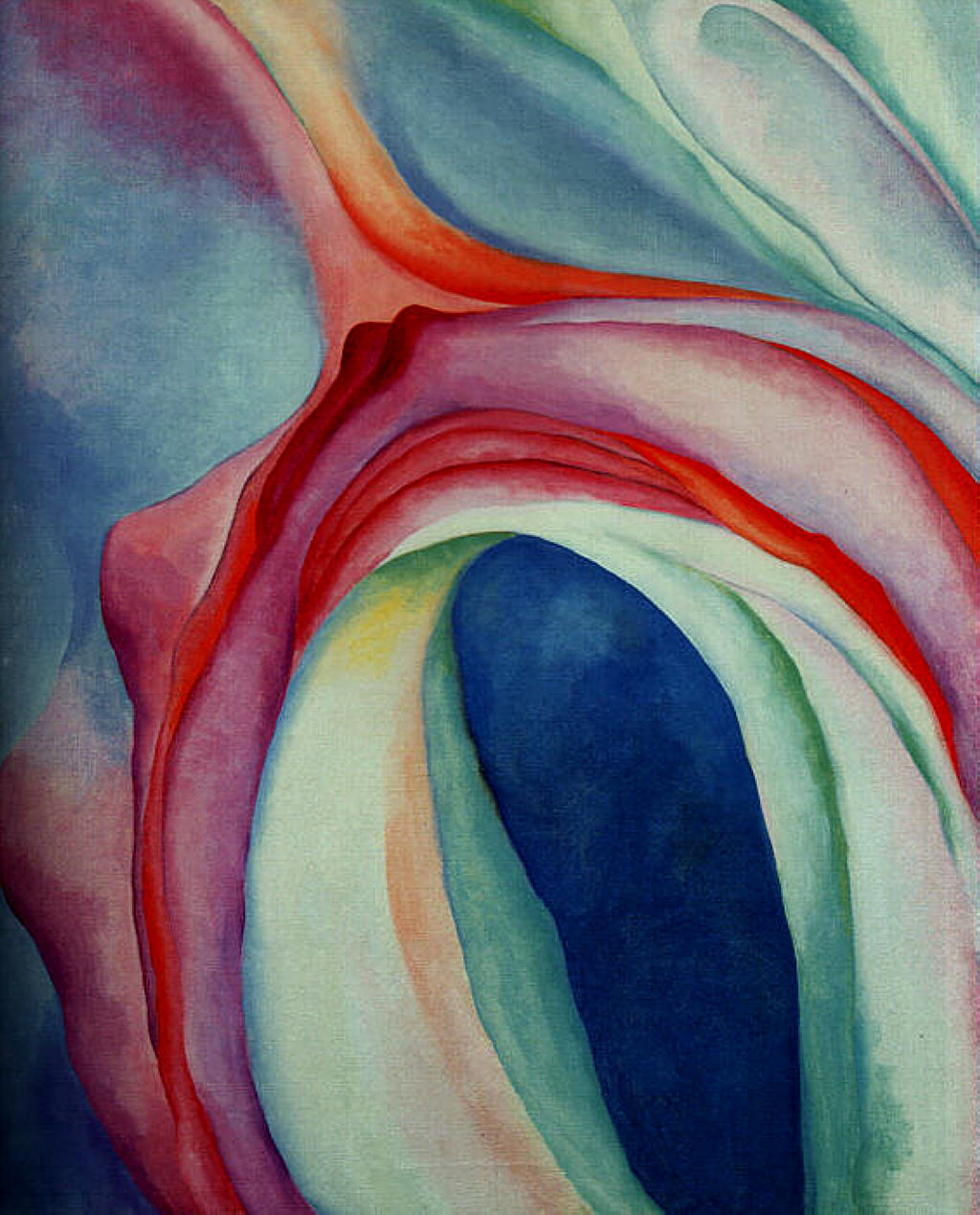 Her pictures are certainly sensual, and her husband's (Alfred Stieglitz') photos of her naked torso, her arms and hands in particular, make her appear to have been a sensual person, although the photos of her face look stern and severe. She was irritated by her contemporaries' interpretation of her work at this point in her life: "When people read erotic symbols into my paintings, they're really talking about their own affairs!" she said. It upset her to the extent that she stopped painting abstracts and began to paint her famous flower heads instead, but then people saw those as sexual as well.
Her pictures are certainly sensual, and her husband's (Alfred Stieglitz') photos of her naked torso, her arms and hands in particular, make her appear to have been a sensual person, although the photos of her face look stern and severe. She was irritated by her contemporaries' interpretation of her work at this point in her life: "When people read erotic symbols into my paintings, they're really talking about their own affairs!" she said. It upset her to the extent that she stopped painting abstracts and began to paint her famous flower heads instead, but then people saw those as sexual as well.Her work reminds me of the Canadian artists Lawren Harris and Emily Carr.
 O'Keeffe and the photographer Alfred Stieglitz first lived on the 30th floor of an hotel in New York from which vantage point they photographed and painted or sketched (in charcoal) the city skyscrapers, industrial landscape and waterways. For respite in the 1920s, they would go to Lake George which Georgia quite liked, having first seen it in 1908, but she felt "smothered in green" there and concentrated on other things than the wooded hills: farmhouse doors, individual trees (showing the influence of Cézanne, to which she admitted) and an extraordinarily 3-dimensional close-up of dying leaves in oils, entitled Oak Leaves, Pink and Grey (1929). The previous year she had also painted an intensely observed sea shell, Shell No. 2, that too very 3-dimensional. In 1932 she was thrilled by a trip to the Gaspé peninsula, admiring the swirling thunderclouds over the sea and "lush" potato flowers in the fields. She might have stayed there and become Canadian if it hadn't had such a chilly climate.
O'Keeffe and the photographer Alfred Stieglitz first lived on the 30th floor of an hotel in New York from which vantage point they photographed and painted or sketched (in charcoal) the city skyscrapers, industrial landscape and waterways. For respite in the 1920s, they would go to Lake George which Georgia quite liked, having first seen it in 1908, but she felt "smothered in green" there and concentrated on other things than the wooded hills: farmhouse doors, individual trees (showing the influence of Cézanne, to which she admitted) and an extraordinarily 3-dimensional close-up of dying leaves in oils, entitled Oak Leaves, Pink and Grey (1929). The previous year she had also painted an intensely observed sea shell, Shell No. 2, that too very 3-dimensional. In 1932 she was thrilled by a trip to the Gaspé peninsula, admiring the swirling thunderclouds over the sea and "lush" potato flowers in the fields. She might have stayed there and become Canadian if it hadn't had such a chilly climate.Back in the States, her husband took black and white photos of her face, body and expressive hands, which gave her a "feeling of wonder and excitement", especially the one of her hands caressing the skull of a horse!
In the next gallery I found those flower heads in oils for which she's popularly known: oriental poppies, an amarylis, calla lilies, an iris, a petunia and the trumpet like white flower of a jimson weed. According to the notes on the wall, they are all about "...looking intensely [...] a response to the speed of the modern world." She focussed on fruit and vegetables too, including a more-than-real aubergine (eggplant).
Towards the end of her life, suffering from macular degeneration, she painted the flow of river valleys seen from above, and layers of sky. Her painting White Cloud graduates downwards in layers from blue to mauve to turquoise to green, then (two-thirds of the canvas) white, representing an undercast of cloud. She had a large personal abstract in oils that hung by her bed which she called "My Last Door": it was a black square in the middle of a wall of white, with some touches of grey. A momento mori, presumably. Although the exhibition notes didn't state this, she must have inclined towards mysticism.
She wrote, "Whether you succeed or not is irrelevant. Making your unknown known is the important thing --- and keeping the unknown always beyond you."


No comments:
Post a Comment